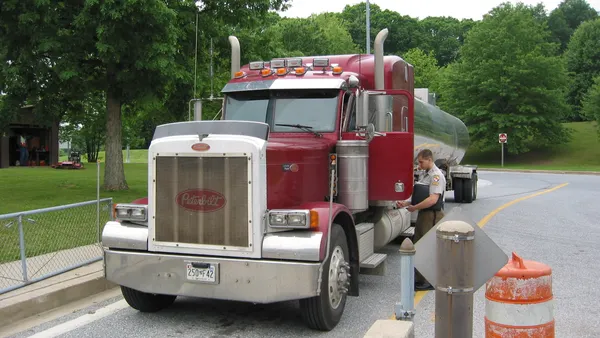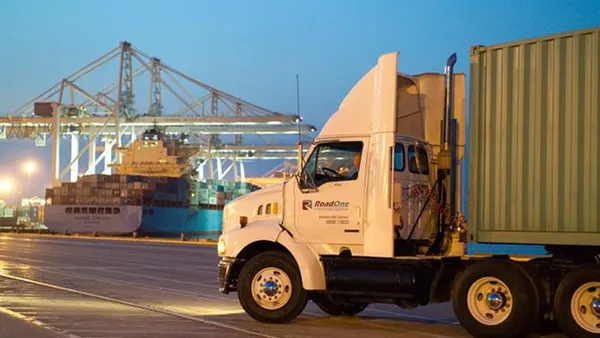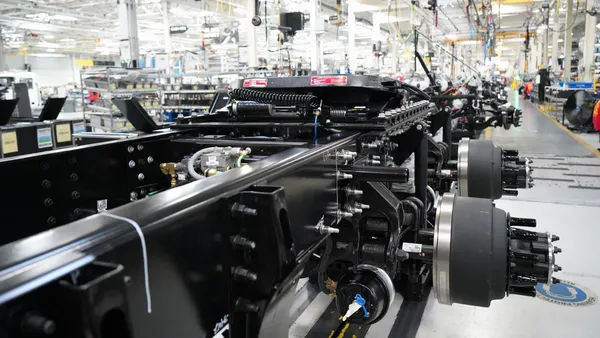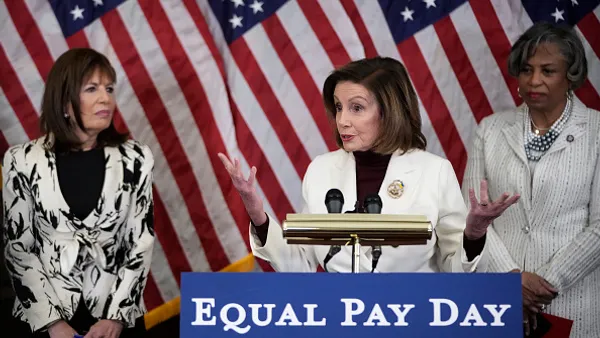Dive Brief:
- Owner-operators are averaging about $70,000 a year, a new record, according to ATBS, which tracks income through its tax and financial service to independent carriers.
- Independent contractor pay is up 10.2% YoY, up $6,500 from mid-September 2020, said Michael Hosted, ATBS vice president of business development, during a webcast. The average owner-operator who works with ATBS is netting about 75 cents per mile, leading Hosted to tell drivers they should “make hay when the sun shines,” noting the “on-fire” freight market and spot rates.
- Hosted warned the hot market, tight capacity and supply chain woes also mean higher costs for new tractors, used tractors and maintenance. And freight booms usually go bust as bigger fleets flood the market with capacity, he said. Yet fleets cannot do that now, due to equipment and labor constraints, said Hosted. Because of this, he predicted this particular boom could last through Q2 2022, and possibly through all of 2022.
Dive Insight:
Driver pay overall has been trending higher for the last several years, according to the American Transportation Research Institute. From 2012 to the end of 2018, driver pay rose 43%, while driver benefits rose 55%, according to an ATRI presentation.
Wages dipped after the 2017-2018 freight boom subsided, from 59.6 cents in 2018 per mile to 53.3 cents per mile in 2019, another ATRI report found. Then, the COVID-19 pandemic brought havoc to spot prices in the first half of 2020.
In mid-May 2020, independent drivers parked their trucks in protest near Capitol Hill and the White House. They were objecting to the drop in spot rates to as low as $1.10 per mile. At the time, it was unclear when rates might bump up.
Rates began a slow, steady climb. By summer of 2020, inventories were picked almost bare, leading to heightened demand for carriers. Sparse inventories, supply chain problems, driver shortages, turnover, fear of COVID-19 and e-commerce have kept carrier demand high for a year, and as a result, shippers and carriers have had to raise wages.
Spot linehaul rates
The attractive spot rates have led many drivers to seek FMCSA authority to be independent carriers. Authority requests to the FMCSA boomed in 2020 and into 2021. In 2020, the U.S. industry added nearly 58,000 new carrier groups, according to Avery Vise, FTR vice president of trucking. That was a 36% jump from 2019, according to Vise’s analysis.
As a result, fleets seek to keep their drivers in-company. Dan Murray, ATRI senior vice president, said in a webcast that industry driver pay is now going up 4% to 5% for the last couple of years — and that does not include bonuses.
The multiple market factors and desire to hold on to drivers have led some carriers to make multiple pay raises within a year. By April, Roehl Transport announced its second pay raise in 2021. Roehl Transport driver Daniel Walton told CNN in late May that the pay raises helped his pay go from about $40,000 annually, several years ago, to $70,000 annually this year.
In an effort to reduce turnover, Roehl Transport also announced it would aim for more dedicated routes for drivers, to get them home by the end of the work week.
Hosted told webinar attendees that the market is also taking care of driver concerns with more money for fewer annual miles.
“As a quality-of-life perspective, when we look at 2003 — when we were running 140,000 miles to make $47,000 a year — we are now running 100,000 miles a year to make $70,000 a year,” said Hosted. “Our miles are down by about ... 35%, and our net income is up by about $23,000 in that time frame.”
On the company side, base pay for drivers can vary by type of routes. According to Werner’s blog, regional drivers can make 37 cents to 55 cents per mile, translating to between $37,840 to $56,249 per year. Solo OTR drivers can make between 44 cents to 55 cents per mile, Werner wrote in July, translating to between $44,999 to $56,212 per year.











